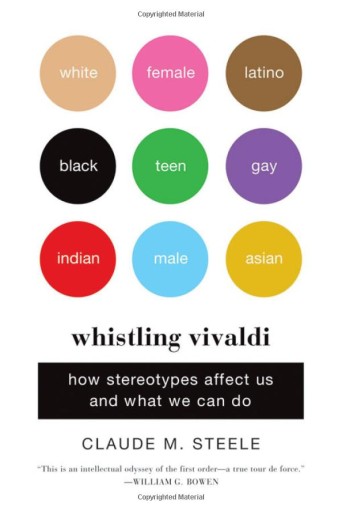

These situations can decrease performance, for example, when a white sprinter is competing against black runners, because the stereotype is that black runners are naturally more athletic, the white sprinter will have to overcome this extra psychological hurdle or his performance will decrease. He worried how he would be perceived if he spoke in this environment, so to escape possible judgment, was quiet. Steel references Ted McDougal, a white college student he once had as a student, who had had a similar experience in a political science class composed of mostly black students. Steel, not wishing to be part of these rules, opted to just not swim or skate at the roller rink. He was already learning stereotypes about black people, such as they couldn’t swim because of a history with slave ships, and if they did swim it could only be on Wednesday and they should only go to the roller rink on Thursday at night. It was in the late 1950s, and he was seven or eight years old walking around Chicago. Steel recalls the first time he realized he was black. The first-person account has eleven chapters that interweave personal anecdotes with group and case studies from Steel’s career. Its themes include institutional racism, the insights possible with psychology, and the possibility of improving society through valid psychological research. The title comes from Brent Staples, an African-American writer who used to whistle Vivaldi or the Beatles while walking in Chicago so that people wouldn’t think he was dangerous. Whistling Vivaldi is part memoir and part meta-review of Steel’s thirty-plus years of psychological research on the effects of stereotypes. He coined the term “stereotype threat” in 1995 based on research with African-American students where they performed differently on the GRE when they were told the test was related to intelligence versus when they were told it was just a game. "Whistling Vivaldi" offers insights into how we form our senses of identity and lays out a plan for mitigating the negative effects of 'stereotype threat' and reshaping our identities.Prominent social psychologist Claude Steel discusses the great social power of stereotypes in Whistling Vivaldi: How Stereotypes Affect Us and What We Can Do (2010). Steele's conclusions shed new light on a host of social phenomena, from the racial and gender gaps in standardized test scores to the belief in the superior athletic prowess of black men. Through dramatic personal stories, he shares the experiments and studies that show, again and again, that exposing subjects to stereotypes - merely reminding a group of female maths students about to take a test, for example, that women are considered naturally inferior to men at maths - impairs their performance in the area affected by the stereotype. Steele offers an insider's look at his groundbreaking findings on stereotypes and identity. Conclusion: Identity as a bridge between us.Īcclaimed social psychologist Claude M.The distance between us: the role of identityy threat.Reducing identity and stereotype threat : a new hope.The strength of stereotype threat : the role of cues.The mind on stereotype threat : racing and overloaded.The many experiences of stereotype threat.A broader view of identity : in the lives of Anatole Broyard, Amin Maalouf, and the rest of us.Stereotype threat comes to light, and in more than one group.

A mysterious link between identity and intellectual performance.An introduction : at the root of identity.


Bibliography Includes bibliographical references (p.


 0 kommentar(er)
0 kommentar(er)
